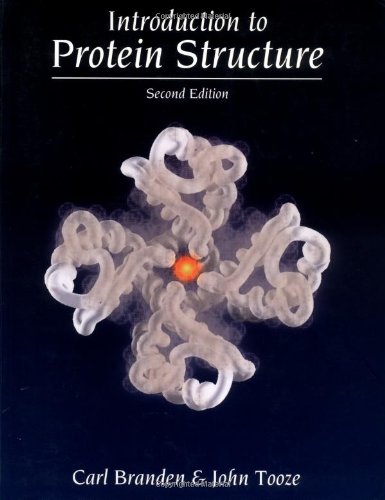Introduction to Protein Structure pdf download
Par bader thomas le dimanche, août 7 2016, 04:51 - Lien permanent
Introduction to Protein Structure. Carl Branden, John Tooze

Introduction.to.Protein.Structure.pdf
ISBN: 0815323050,9780815323051 | 415 pages | 11 Mb

Introduction to Protein Structure Carl Branden, John Tooze
Publisher: Taylor & Francis
ISBN-13: 9780815323051,978-0815323051. Introduction to Nanotechnology. Ioan Kosztin and Klaus Schulten. Structure, function, and quantum dynamics of pigment-protein complexes. Molecular modelling - Wikipedia, the free encyclopedia The types of biological activity that have been investigated using molecular modelling include protein folding, enzyme catalysis,. Once these crystals are large enough will be used for solving the structure. And more specifically, why should you care? In Masoud Mohseni, Yasser Omar, Greg Engel, and Martin B. The equilibrium state of CCR5 is manipulated here toward either activation or inactivation by introduction of single amino acid substitutions in the transmembrane domains (TMs) 6 and 7. Amino acids are covalently bonded into a peptide chain. Details of Book: Introduction To Protein Structure Book: Introduction To Protein Structure Author: Carl Branden, John Tooze ISBN: 081532305. According to the neutral theory of evolution, the functionality of protein with disadvantageous amino acid substitution can be restored by another amino acid substitution which compensates the first one to sustain the fitness [1]. Lecture 4 – Introduction to Protein Structure (1)IntroductionProteins are the functional forms of polypeptides. Furthermore, replacing Trp-248 with a smaller aromatic amino acid (Tyr/Phe) impaired the β-arrestin recruitment, yet with maintained G protein activity (biased signaling); also, here aplaviroc switched to a full agonist. If you need to, read the Protein Structure Prediction I post for an introduction to the chemistry of proteins.) Ok so now the important part: why do proteins fold? Proteins are prompted to form crystals under the appropriate conditions. The secondary structure - the identification of regular elements - occurs via regular H-bonding. In new work, researchers have now described a strategy for creating a nearly unlimited range of microforms from crosslinked protein, including structures composed of multiple proteins. Plenio, editors, Quantum Effects in Biology. Introduction to Protein Structure.